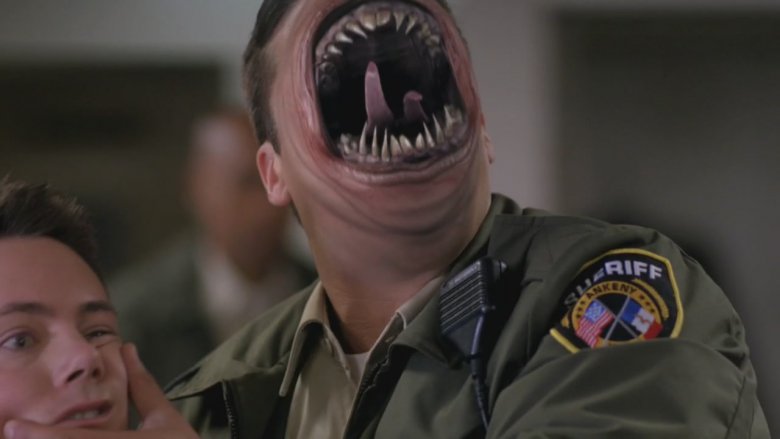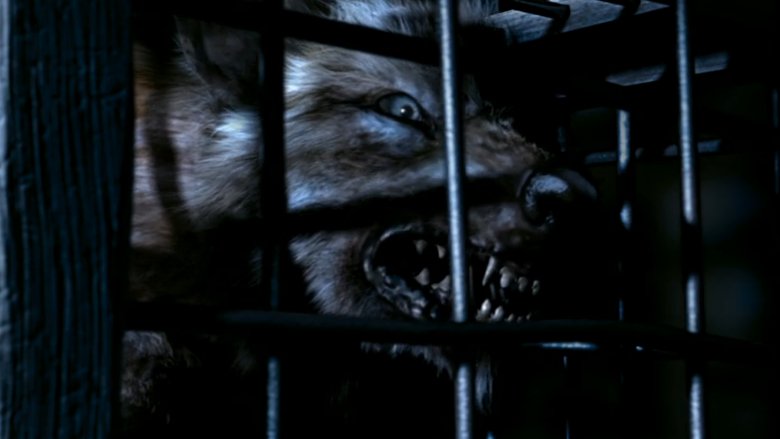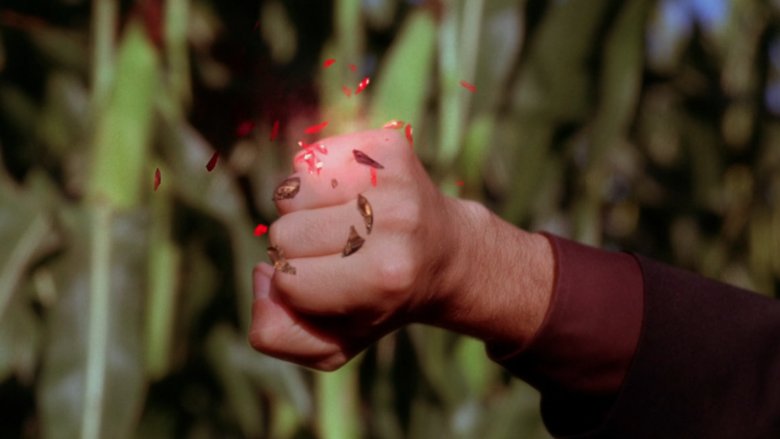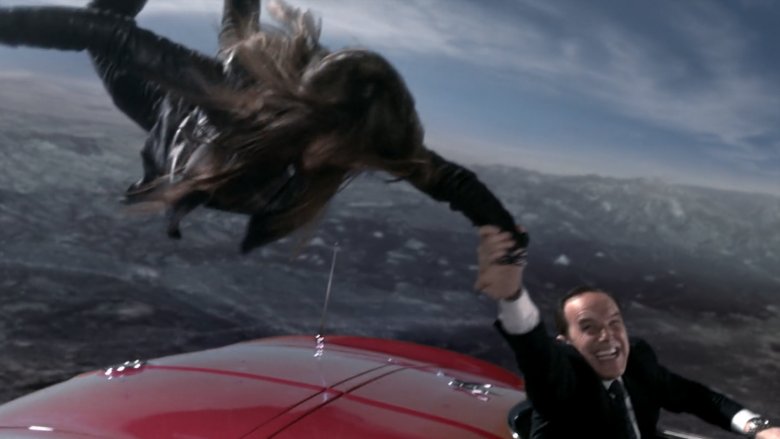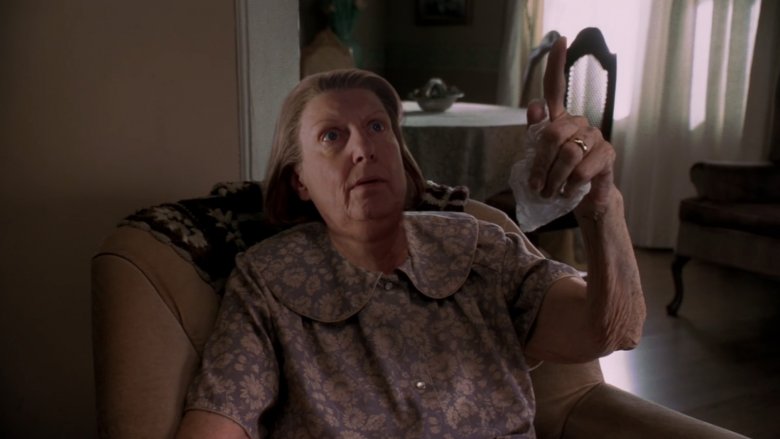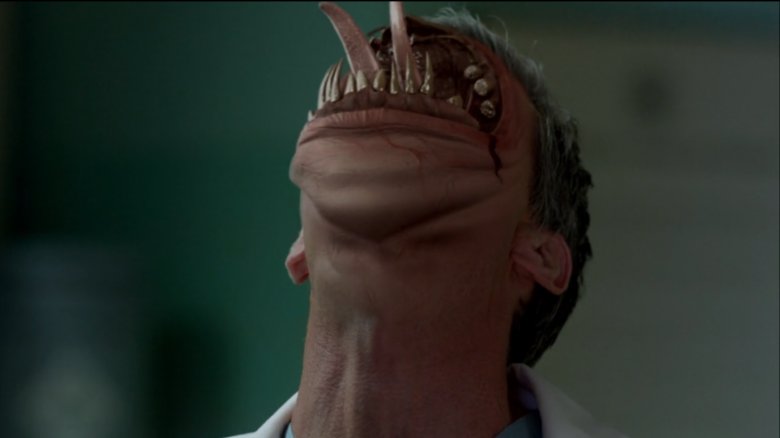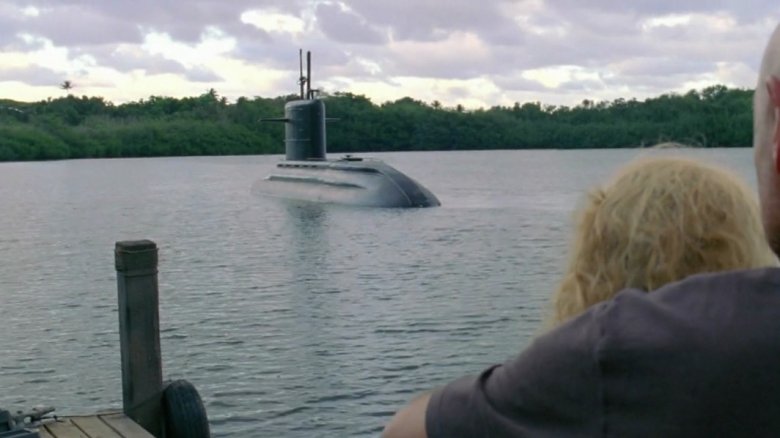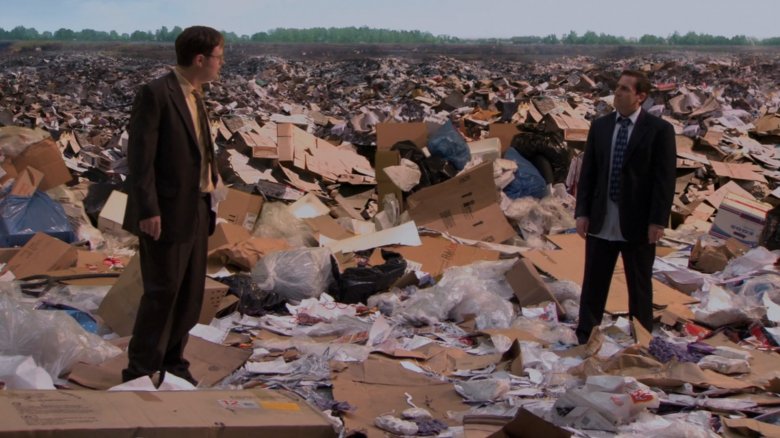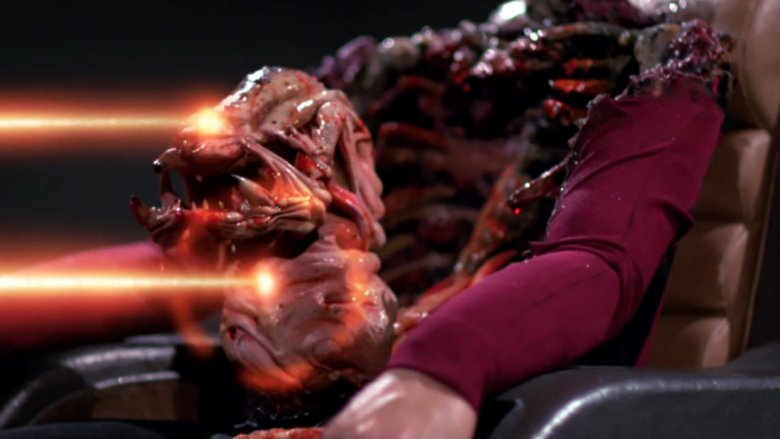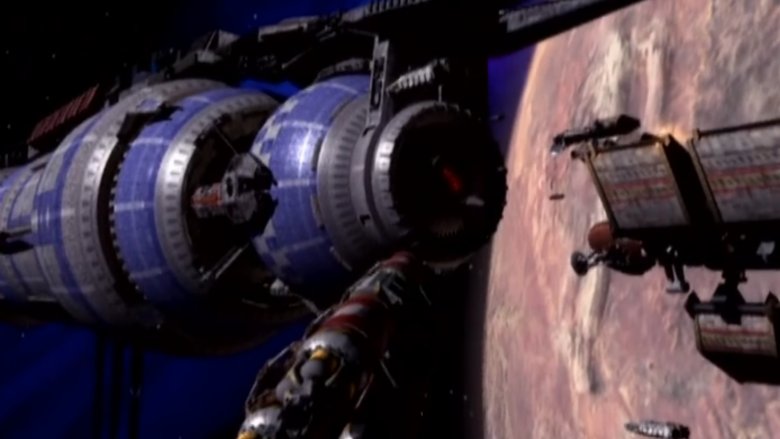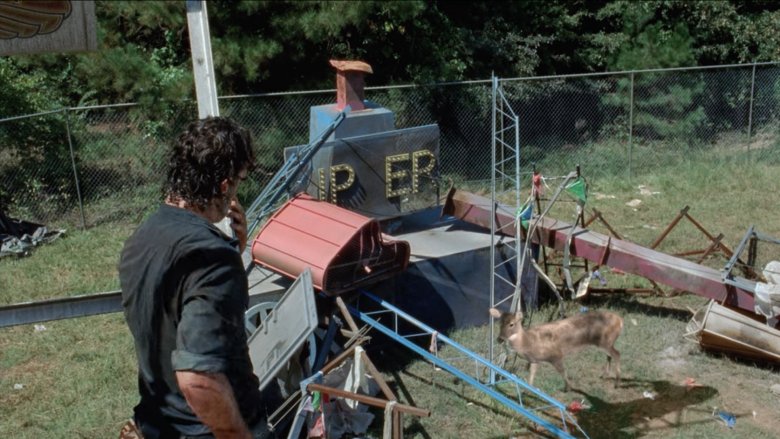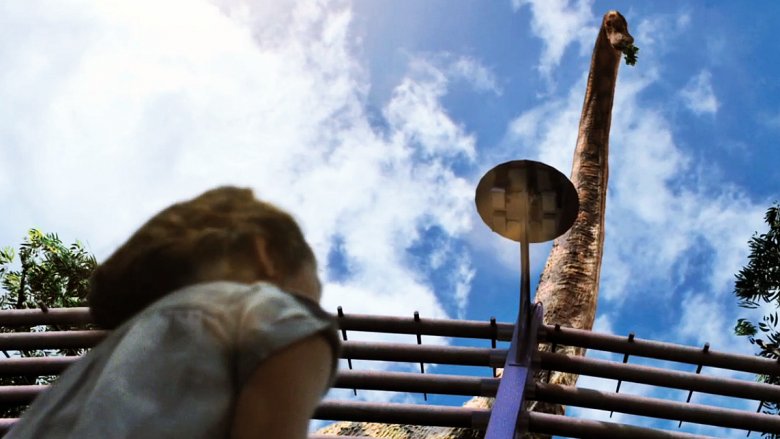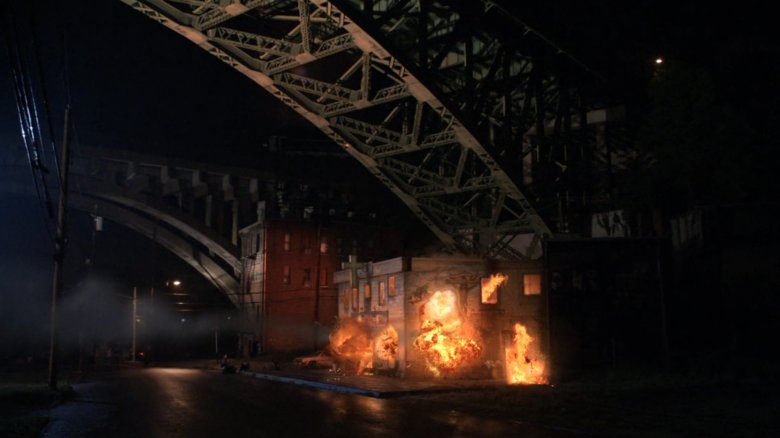Great TV Shows Ruined With Bad Special Effects
Since Hollywood's infancy, special effects have been utilized to bring magic to life and make the impossible seem possible. When used correctly and with care, these visual effects — from CGI to practical elements — blur the line between what's fiction and what's real. Of course, there are numerous examples of effects gone wrong, especially when you look at the small screen.
Television budgets are much smaller when compared to their big-screen counterparts, and when you consider that television production teams have shorter production cycles to create a lot more content — over 20 episodes a year, for some shows — it isn't hard to see why some special effects come out looking particularly rough. Even some of the greatest shows in the history of American television have had moments ruined by some egregiously bad effects.
It doesn't help that viewers' standards for quality effects continue to rise, leaving shows that were cutting edge for the time looking cheap years after release. Subpar special effects don't always ruin a show — or even spoil an episode — but they certainly can shatter the powerful illusion great TV shows hold over viewers.
Doctor Who
Since the show debuted in 1963 on the BCC, hundreds upon hundreds of Doctor Who episodes have aired throughout the years in various incarnations. The most recent version of the show started airing in 2005 and quickly continued the series tradition of subpar visuals. Doctor Who is so infamous for painfully bad and/or comical special effects, there's an entire page dedicated to pointing them out throughout the shows lengthy history at TV Tropes.
For the uninitiated, Doctor Who follows the adventures of an extraterrestrial humanoid being known as "the Doctor" who travels through time and space in his spaceship, the TARDIS. Accompanied by a number of companions throughout the show's many episodes, the Doctor fights every type of monster and alien you could think of while working to save the many civilizations of the universe.
In "Tooth and Claw," episode two of the rebooted series' second season, the Doctor and his companion Rose travel to Scotland in 1879 where a band of monk warriors plan on using a werewolf-alien to seize power over the British Empire by turning Queen Victoria herself into a werewolf. While the completely CGI transformation of the alien werewolf was lauded for its time, it has aged quite poorly.
Smallville
Seeing as Smallville is a show about the adolescence of the world's original superhero, Superman, it should come as no surprise to hear the show relied heavily on special effects — both digital and practical — to make viewers believe a man could run faster than a speeding bullet and leap tall buildings in a single bound. Many of the effects used in Smallville were so good, the main VFX team, Entity FX, earned multiple nominations for their work on the show. Alas, a particular special effect shot from "Red," the fourth episode of the second season, is now remembered for its utter lack of realism.
In the episode, Clark Kent's high school unwittingly winds up using red kryptonite in its class rings. The effect on Clark is pretty stunning to his friends and family, as he transforms from America's golden boy into a jerky teen who chooses to use his powers for personal gain instead of the betterment of others. At the end of the episode, his father Jonathan smashes the ring with a sledgehammer to resolve the conflict. In a perfect mash-up of extremely convenient hand placement and extremely shoddy effects work, the explosive shattering of the ring from around Clark's finger becomes a hilarious moment that begs repeat viewings.
Agents of S.H.I.E.L.D.
While the Marvel Cinematic Universe is out racking up billions and billions of dollars in theaters for Disney, many forget about the small-screen network cousin to all the big-screen bombast: Marvel's Agents of S.H.I.E.L.D. Existing in the same universe as the Avengers is pretty hard for a television show to pull off. Fans of the films expect incredible effects from their superhero stories and the series has done an amicable job of living up to those standards while trying to justify its existence to skeptical fans in the process. More often than not, Marvel's Agents of S.H.I.E.L.D. elegantly handles elaborate set pieces that deserve mention alongside their film counterparts... but that isn't always the case.
In the 20th episode of the first season, series protagonists Agent Coulson and Skye are forced to retreat from a firefight aboard an airship to Coulson's flying car, Lola (yes, you read that correctly) and drop out of the sky. Of course, the pair didn't have time to buckle their seatbelts before plummeting down to Earth, so viewers are treated to actors doing their best to sell a scene in which they scramble for safety even though they're obviously on a soundstage with fans and green screens surrounding them. Even for a show based on comic books, it comes off as cartoony.
The Sopranos
The Sopranos is widely considered to be one of the greatest television shows of all time. Winning 21 Primetime Emmys over its six-season run, the show was named "the best-written TV series of all time" by the Writers Guild of America, "the best television series of all time" by TV Guide, and ranks first in the Rolling Stone list of "the 100 greatest TV shows of all time." It's safe to say the show's legacy is safe and that its place in the American pop culture zeitgeist is firmly entrenched. That being said, even the greatest pieces of art can have flaws, and this particular scene from "Proshai, Livushka," the second episode of season three, is jarring to watch.
To be fair, the production team for The Sopranos was put in a very difficult position, as actress Nancy Marchand passed away before shooting began on that season and David Chase, the show's creator, wanted her character to show up one last time to avoid having a major supporting character die offscreen without even appearing in the episode. In order to bring Marchand back, Chase and his crew paid Rhinoceros Visual Effects and Design $250,000 to splice together clips from 18 different appearances Marchand had previously done on the show and paste them on top of a body double. While admirable, the effect is unconvincing to watch now and is just a tad bit haunting at the same time.
Supernatural
By the time Supernatural finally ends its lengthy run, it will have been on the air for 15 seasons and over 300 episodes. The cult smash follows a pair of brothers as they hunt supernatural phenomena including ghosts, monsters, and demons and has inspired an extremely dedicated legion of fans. While many effects throughout the show's hundreds and hundreds of episodes are very well done, there were bound to be a few that turned out to be a bit dodgy. Enter season seven antagonists the Leviathans.
The Leviathans are a race of ancient, primordial beings that God created before angels and humans. These monsters proved to be far too ravenous and destructive, thus God created Purgatory and locked them inside. Of course, these shapeshifters break free and are the main baddies for an entire season of the show. One of the odder transformations the Leviathans take is when they're in their human form and suddenly create a giant mouth of sharp teeth that covers the whole of their face. While it's an interesting design in concept, in practice the effect comes across as more comical than it should.
Lost
Lost was a cultural phenomenon that ran for six seasons starting in 2004, launching the careers of J.J. Abrams and Damon Lindelof into the stratosphere in the process. The show is about the trials and tribulations of a group of people who survive a plane crash on a mysterious island somewhere in the South Pacific. The Emmy award-winning science-fiction drama was one of the most expensive shows on the air during its heyday, with the pilot episode alone costing over $10 million to produce. Of course, all of the money in the world doesn't guarantee convincing special effects.
During "Follow the Leader," the 15th episode of the fifth season, there is a particularly terrible CGI submarine that descends into the ocean after leaving the island. Saying the vessel looks like a life-size child's toy would be a compliment; the quality of the effect is more akin to a cutscene from a Sega Dreamcast-era video game than anything else.
The Office
After a rough start with a first season that didn't hit the mark, The Office — an American adaptation of the Ricky Gervais-led British sitcom — became a surefire hit for NBC, eventually running for nine seasons and winning four Emmys along the way. The show would make stars out of Steve Carell and John Krasinski and popularized the documentary-style filming process it would become known for. Perhaps it's the clash of the show's cinéma vérité production style with a very obvious green screen effect that makes this particular effect stand out so starkly.
In sixth season episode "New Leads," Michael Scott and Dwight Schrute head to a local garbage dump to find some sales leads that had been thrown in the trash. It's understandable that the production team wouldn't want to shoot at an actual garbage dump, but the one they constructed in its place is alarmingly fake. The fact that the actors are standing in front of a green screen is made even more obvious by the decision to follow series tradition and use constant zooming for emphasis. Doing so forces the viewer to notice that the lighting on the actors, and the soundstage full of garbage around them, doesn't match the lighting of the digitally inserted background behind them.
Star Trek: The Next Generation
Star Trek: The Next Generation has the distinction of having both a serious cult following as well as mind-blowing mainstream success. While Entertainment Weekly ranked the show at number seven on their list of the "26 Best Cult TV Shows Ever," Star Trek: The Next Generation also was one of the most popular shows on television when production ended and won 17 Emmys during its celebrated run. The show was awarded multiple Emmys for "Outstanding Individual Achievement in Special Visual Effects" and the majority of the effects done on the show were cutting-edge for the time period. Alas, a show as effects-heavy as ST: TNG was bound to have a few stinkers in the mix.
This scene from season one episode "Conspiracy" is an example of the production team's reach exceeding its grasp. The meshing of digital and practical effects doesn't quite come together here, with the head explosion coming off as the worst part of the overall scene.
Babylon 5
Unlike the vast majority of television shows during the 1990s, Babylon 5 was conceived as "A five-year story, a novel for television" by series creator J. Michael Straczynski; having the science fiction show focus on human military staff and alien diplomats stationed on the titular Babylon 5 space station meant the creative team would have to heavily rely on CGI to achieve their vision. The show's visual effects haven't aged well, and the transition from standard definition to high definition has only made Babylon 5 harder for newer audiences to get into.
There's been a lot of online hubbub from passionate fans about restoring or upgrading the effects of the show, but that seems to be a long shot at this stage. According to Daniel Cooper of Engadget, remastering Babylon 5 with new CGI effects would cost $10 million at the very least. It is hard to imagine any company footing that bill merely to appease a fanbase, even if the show was at the vanguard of cohesive, long-term storytelling on modern syndicated television.
The Walking Dead
Unless you've been living under a massive rock for the past decade, you're most likely at least somewhat aware of horror mega-hit The Walking Dead. The post-apocalyptic show, based on the critically acclaimed comics series by Robert Kirkman, follows a cast of survivors trying to make their way through a zombie plague. The Walking Dead has been an absolute ratings smash, at one point becoming the first cable series to become the highest-watched show in the key ratings demographic of adults aged 18-49. Since its debut in 2010, the show has gone on to inspire spinoffs and has become a merchandising cash cow... so there really doesn't seem to be much of an excuse for the abysmal quality of the CGI deer in this scene.
The appearance of the clearly-not-there deer during 2017 episode "Say Yes" inspired a slew of negative fan reaction on social media, and it's not hard to see why. For a show that's consistently lauded for its amazing effects work, this particular blunder really stands out.
Terra Nova
The Steven Spielberg-produced Terra Nova came and went so quickly, it's hard to remember that the show was such a massive undertaking for the production team at the time. The light and breezy sci-fi show cost $4 million an episode, about $1 million more per episode than the average broadcast television drama at the time — which didn't bode well, as the show wasn't that big of a hit for Fox. Each episode of the series took from eight to nine days to shoot, average for most television dramas, but spent six weeks in post-production, twice the television average at the time.
The higher-than-average cost and outrageous production time all stems from the extensive CGI work needed to bring the show's dinosaurs to life. Terra Nova followed a human colony who time-traveled 85 million years into the past to escape the overpopulated dystopia of the mid-22nd century. Doing so sets up carnivorous dinosaurs as a real problem for the colony, and while some shots of the dinosaurs were better than others, a lot of times — particularly when the camera is moving — these computer-generated beasties just didn't look realistic enough to elicit any type of fear.
Justified
Justified banked on fantastic performances and realism to sell the hyper-violent world of Raylan Givens and Harlan County, Kentucky. Based on Elmore Leonard's short story "Fire in the Hole," the show followed Givens, a U.S. Marshall played by Timothy Olyphant, as he bent the rules of the law to elicit his own personal brand of justice on the criminals of his hometown. It's too bad series antagonist Boyd Crowder first surfaced in the pilot with a scene that not even the most talented actor could pull off.
The audience was introduced to Crowder as he headed to a church with intent to blow it to kingdom come. Walton Goggins, who would go on to earn an Emmy nomination for his role, tried his best to sell the fact that he was supposed to be shooting a rocket launcher. However, he was holding a prop launcher (understandably) that didn't fire, leading Goggins to jolt himself backwards like a child playing with his friends at the park. A crudely animated missile flew across the street to the church which (again, understandably) didn't blow up, but was made to appear as if it did through the magic of CGI. The effects team clearly didn't have the time or budget to do this effectively, as the fire that erupted in the building fooled absolutely no one.
